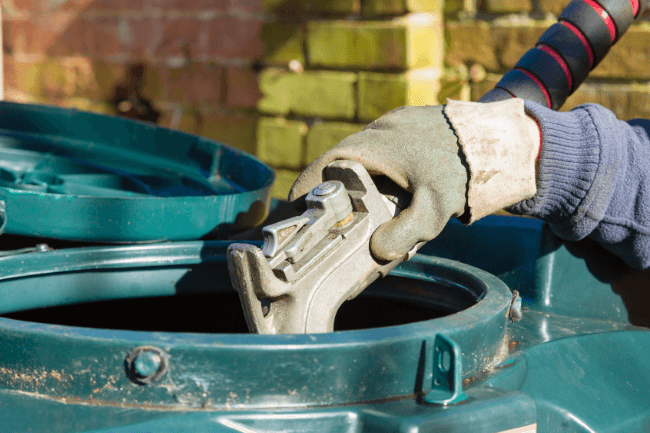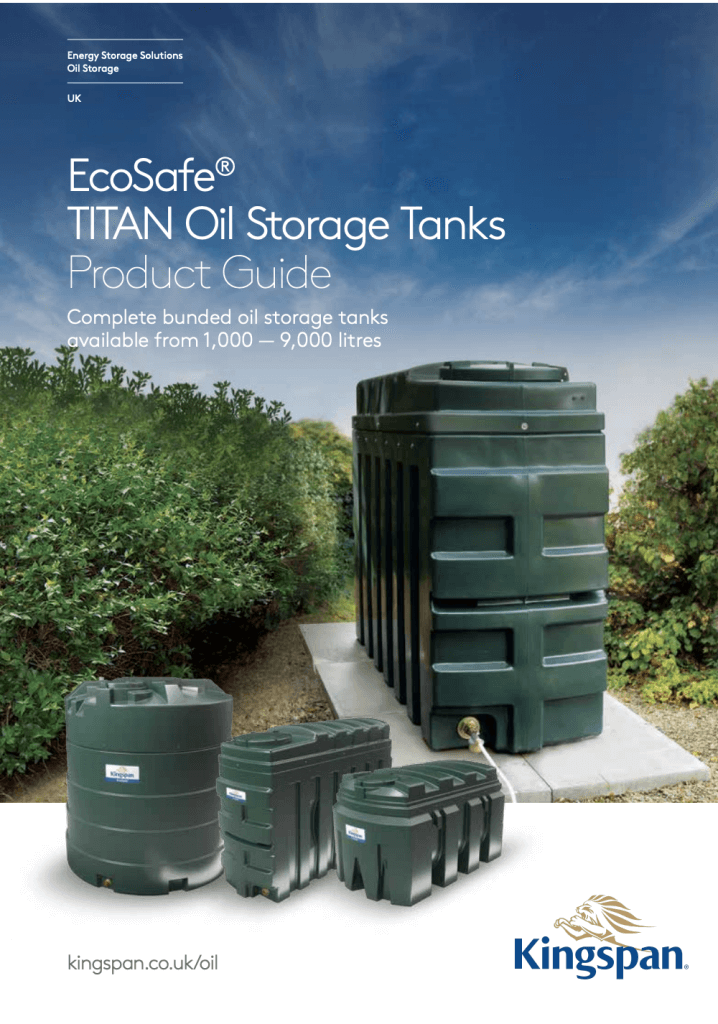Choosing a domestic oil tank can seem like a bit of a minefield if you’ve never had to do it before. One of the biggest decisions you’ll need to make early on is whether to buy a single skin or bunded oil tank.
This may not seem like too complicated a decision, but there are a few things to consider before deciding. And there are several regulations that will affect which one is best for you.
In this blog we’ll look at the differences between bunded and single skin oil tank, to help you decide which one is best for you.
Related content: Plastic vs steel oil tank: which is best?

What is a single skin oil tank, and should you install one?
A single skin oil tank is just what it sounds like, a tank where the oil is held within one single layer of either plastic or steel.
This simple construction means that single-skin tanks are usually the cheaper of the two options, ranging from around £350 to £1200. And the installation and maintenance may be a little more straightforward.
However, since there is only one skin, which has no failsafe, there are a few conditions that must be met if you are going to install a new single-skin oil tank:
- The capacity of the oil tank must be less than 2500 litres
- The tank must not be with 10m of watercourses such as rivers, streams, and ditches.
- The tank must not be located where a spillage could run into an open drain or loose-fitting manhole cover
- The tank must not be located within 50m of a drinking water source such as a well, borehole or spring.
- The tank must not be located over hard ground that could enable spillage to run off to reach controlled water such as rivers, streams, and ditches.
- The tank isn’t located in a position where the vent pipe is not visible from the fill point ie. if the delivery driver is parked at the front and the vent pipe is at the back
- The tank doesn’t supply heating oil to a building other than a single-family dwelling ie. it cannot be commercial
- The tank isn’t located within a Ground Source Protection Zone 1
- There are no other potential environmental hazards
If you are confident that all the above conditions can be met, then you will be able to install a single skin oil tank.
If you are not sure, then please feel free to check with our team. You can see the single-skin oil tanks that werecommend here.
What is a bunded oil tank, and should you install one?
A Bunded Oil Tank is a double skinned tank. You can picture it as a tank within another tank. The outer tank acts as a failsafe so that if the internal tank fails or overflows it will be caught by the secondary bund.
As outlined by the Scottish Environment Protection Agency, a domestic oil tank with a capacity of over 2500 litres must have a secondary containment system such as a bund or drip tray. The secondary containment system must be able to contain at least 110% of the maximum content of the container.
Bunded tanks are more expensive than a single-skin oil tank, ranging from around £700 to over £5000.
If you are looking for a more secure containment system, or if you do not comply with the requirements for a single-skin oil tank then you will need to opt for a bunded tank.
Download the Kingspan EcoSafe brochure.

In summary: which oil tank should you install?
If you are looking to install a domestic oil new tank, then you’ll need to decide whether a bunded or single skin oil is best.
If you fancy a single-skin tank, then you’ll need to ensure that you meet all of the regulations. If you do not, then you’ll need to opt for a bunded oil tank, which is usually a little more expensive, but offers a failsafe which ensures environmental integrity.
If you would like to talk to one of our team about your fuel storage requirements, then get in touch and we’ll help you find a solution that is right for you.
Related content:
Can I get a grant to replace my domestic oil tank and boiler?

